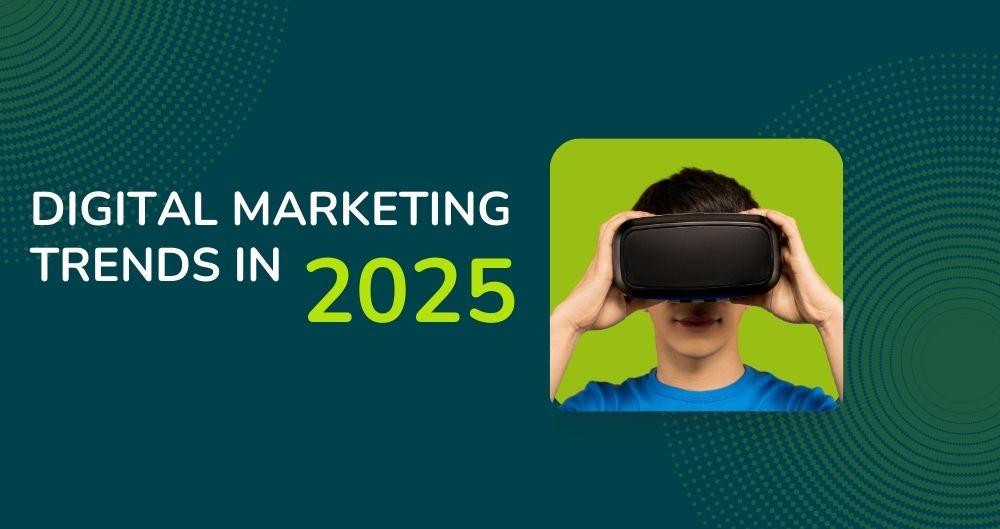
Eight Digital and Marketing Trends for 2025
The world of digital marketing is changing faster than ever. As we enter 2025, businesses must adapt to new technologies, evolving consumer behaviors, and economic challenges. This year, the focus is on efficiency, personalization, and meaningful engagement.
Here are eight key digital marketing trends that will shape the industry in 2025.
1. Fewer, Bigger, and Better Marketing Initiatives
Many companies are facing budget constraints due to economic uncertainties. Instead of trying to do everything at once, brands are focusing on a “fewer, bigger, better” strategy. This means investing in fewer campaigns but making them more impactful, high-quality, and results-driven.
How to Apply This Trend:
- Focus on high-impact marketing efforts instead of running multiple small campaigns.
- Allocate budgets to strategies with the highest ROI (Return on Investment).
- Use data analytics to determine what works and eliminate what doesn’t.
- Prioritize long-term brand-building over short-term gains.
This shift ensures that every marketing dollar spent brings the most value.
2. Smarter Marketing Measurement
The way businesses track and measure marketing performance is changing. With stricter privacy laws and the decline of third-party cookies, companies need new ways to measure success. Traditional metrics no longer provide the full picture, making it essential for marketers to adapt to more complex data measurement strategies.
How to Apply This Trend:
- Invest in first-party data (customer information collected directly from users).
- Use AI-powered analytics for deeper insights into customer behavior.
- Focus on engagement metrics like customer retention and brand loyalty.
- Experiment with privacy-friendly tracking methods, such as contextual advertising.
By embracing new measurement tools, businesses can make better data-driven decisions without relying on outdated tracking methods.
3. Brand Building Through Adaptable and Fragmented Ideas
Marketing is no longer about one big message for everyone. Instead, brands are using multiple small but connected ideas that work across different platforms. This allows brands to be flexible, adaptable, and relevant to different audiences.
How to Apply This Trend:
- Create multi-platform marketing campaigns that adapt to different formats (videos, blogs, social media posts).
- Personalize content for different audience segments.
- Focus on storytelling that resonates with customers.
For example, a fashion brand may have a TikTok campaign for Gen Z, a long-form blog for professionals, and an interactive Instagram campaign for influencers—all connected by a common theme.
4. Consumers Want More Value and Authenticity
Today’s consumers are more selective than ever. They expect more than just a product—they want brands to provide value, transparency, and genuine interactions.
How to Apply This Trend:
- Focus on content marketing that educates and entertains customers.
- Be transparent about company values, pricing, and sustainability efforts.
- Build community-driven engagement through social media and events.
Brands that prioritize customer experience and authenticity will stand out in a crowded market.
5. The Rise of Unified Commerce
The boundaries between online and offline shopping are disappearing. Consumers expect a seamless shopping experience—whether they’re browsing on a website, shopping in-store, or using a mobile app. Unified commerce ensures that all channels work together to provide a smooth and connected customer journey.
How to Apply This Trend:
- Integrate e-commerce with in-store experiences (QR codes, mobile payments, live shopping events).
- Use personalized recommendations across all channels.
- Offer omnichannel customer support (chatbots, social media, email, and phone).
For example, a customer might browse a product online, then receive a personalized offer via email, and buy the product in-store—all as part of a seamless experience.
6. The Power of Creator-Led and In-Person Marketing
While digital marketing remains dominant, brands are realizing the importance of human interaction. Partnering with content creators and organizing in-person brand experiences can help build stronger emotional connections with consumers.
How to Apply This Trend:
- Work with influencers and content creators who align with your brand’s values.
- Host live events, workshops, and brand pop-ups to engage customers in real life.
- Use live-streaming for real-time interaction with audiences.
Brands that combine online engagement with in-person experiences will create deeper and more lasting relationships with their audience.
7. The Rise of Autonomous AI Agents
AI is taking automation to the next level. Businesses are now using autonomous AI agents—smart systems that can run tasks on their own without human intervention. These tools can handle customer support, marketing campaigns, and even business decision-making.
How to Apply This Trend:
- Use AI chatbots for customer service and engagement.
- Automate email marketing and content creation.
- Implement predictive AI to anticipate customer needs.
AI-powered automation can save time, reduce costs, and improve customer experience.
8. Soft Skills Are More Important Than Ever
As AI takes over technical tasks, human skills like creativity, emotional intelligence, and strategic thinking are becoming more valuable. Successful marketers need to blend AI-driven efficiency with human creativity.
How to Apply This Trend:
- Invest in soft skills training for marketing teams.
- Use AI tools to handle repetitive tasks so humans can focus on creativity.
- Prioritize personalized customer interactions over automation.
A brand’s success in 2025 will depend on how well it balances technology and human connection.
Conclusion
The digital marketing landscape in 2025 is about efficiency, innovation, and authenticity. To stay ahead, businesses must:
✔ Focus on quality over quantity in marketing initiatives.
✔ Embrace new ways of measuring success with AI and privacy-friendly tracking.
✔ Build adaptable and flexible brand campaigns for different audiences.
✔ Prioritize consumer trust, value, and authenticity.
✔ Create seamless shopping experiences across all channels.
✔ Combine digital marketing with real-world engagement.
✔ Leverage AI automation while keeping a human touch.
By understanding and applying these trends, businesses can stay competitive, connect with their audience, and drive long-term success in 2025.
You may also like
Tips to Improve Your Social Media Marketing Performance
Do you experience fear from inadequate interaction on your social media pages? Social media posts on each platform should not stop you from asking yourself what went wrong. Here’s a shocking revelation! The game of social media marketing consists of three fundamental...
Google’s Algorithm in 2025: What’s Changed & How to Stay Ahead
As we progress through 2025, Google's search algorithm continues to evolve, significantly impacting search engine optimization (SEO) strategies. Staying informed about these changes is crucial for maintaining and improving your website's search rankings. This article...
How to Spot Topics That Drive Maximum Engagement
We get it. Online content detection has become challenging because so much content is available for users to see. This guide provides instructions for finding relevant trending topics to remain ahead of market competition. Identifying appropriate trending subjects for...



